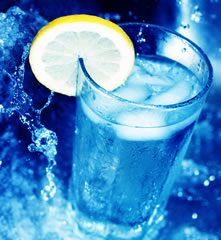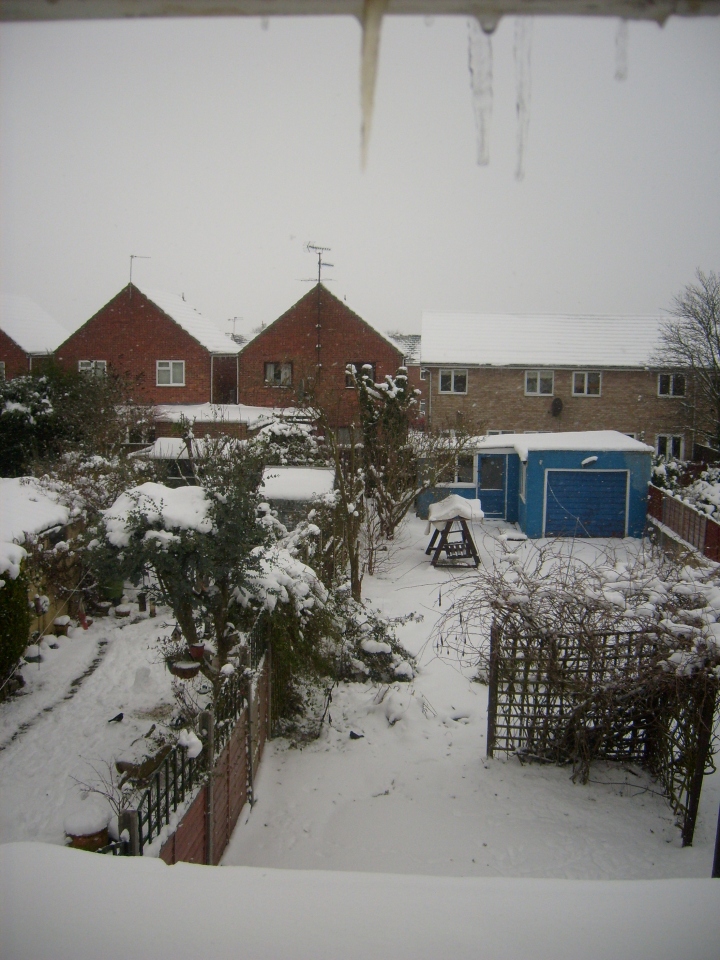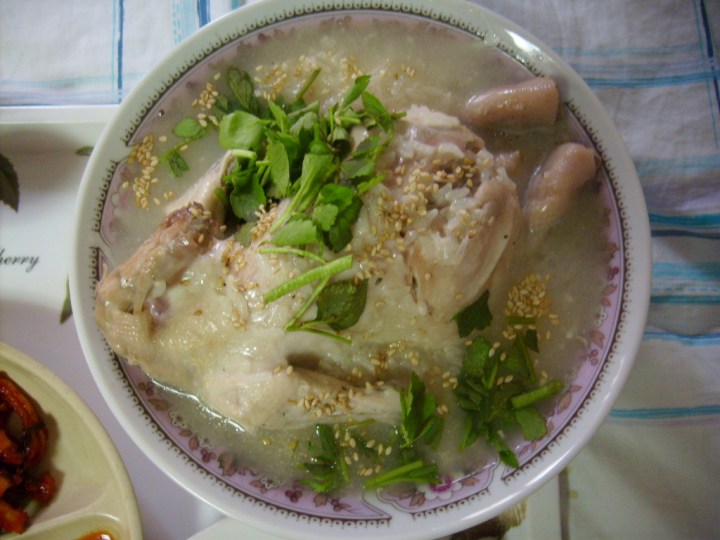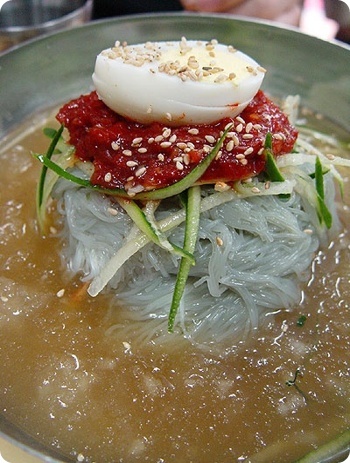Beating Boknal (4) 2011
The hottest period of Korean weather will begin in mid-July when the chang-ma (장마 – monsoon season) has begun to move north towards Manchuria. The hottest period, lasting 2o days, known as boknal (복날), begins on ch’obok (초복) which this year is July 14th. 10 days later is chung-bok ( 중복 – July 24th) followed another 10 days later by mal-bok (말복 – August 3rd). The three days, ch’o, chung and mal, (초, 중, 말) are known as sambok (삼복), ‘sam’ being the Sino-Korean for ‘three.’
Two add confusion, there is Hanyorum (or hanyeoreum, 한여름) which is basically ‘midsummer’ and this begins once the chang-ma (monsoon) has fully moved north. Hanyorum, usually in August, is typified by hot days and balmy evenings. Though the monsoon has gone, it is still humid but perhaps I notice it more being British.
Boknal is supposed to be uncomfortable but personally, I find the humid monsoon season just as horrid. I suppose with boknal you know the end of summer is in sight.
Ways to beat boknal – or at least make it bearable:
sleep with a ‘wooden wife’ – she’ll only cost you about 10.000 Won and apart from being lazy she’s totally mute!
Korean teas, chilled are wonderfully refreshing if not a little ‘just’ in terms of taste.
iced coffee
wear silver summer trousers – I’ve heard the material these suits and trousers are made sometimes called ‘kal-ch’i (갈치) after the silver cutlass fish seen in markets. I’ve had two pairs of these made and they lower body heat considerably.
handkerchiefs and towels – in cheapo ‘dollar shops’ you can buy handkerchiefs for about 1000 Won. I usually find Koreans regard sweat almost as nasty as urine – which is basically what it is!
ice rooms and cold pools – a brilliant way to cool down.
cold showers – pretty obvious, really.
hand fans – plenty to choose from
Then there are a range of foods for combating heat known as bo-yang-shik (보양식). Fight heat with heat (이열치열); Ginseng chicken, and stews including dog stew (보신탕), are the foods typically eaten on three days marking boknal and chicken ginseng is a big favourite right through summer.
Alternatively, fight heat with cold and cool down with patpingsu (받빙수), naeng myeon (cold noodles) and plenty of water melon.
Chill out in one of the numerous cheong-cha (arbors – 정자), they are great at capturing what little breeze is in the air.
Best of all, get naked and lie in the blast of the air-con!
© 林東哲 2011 Creative Commons Licence.
Related articles
- How to Stay Healthy in the Summer Heat According to Chinese Medicine (acurelief.wordpress.com)
Beating Boknal 4 – Water water everywhere
I’ve abandoned the e-bente-tang for the duration of high summer and like some maggoty hippo I spend my time floating about in the cold pool.
Water, in all its forms is wonderful and is only truly appreciated in summer. After or during an intense and sweaty workout, when bodily fluids have been rung out of the body, water is the only drink, barring neutral beverages like cereal teas, that have the potential to satiate a hungry thirst with such intense pleasure. Only in summer, when heat and humidity make an extra drain on the body, and when water both replenishes diminishing levels and lowers soaring temperatures, is water truly appreciated. In the heat of heat summer there are times when you suck in water with such force, living in the moment it is experienced, that it can cascade down your chin and splash down your chest in the most refreshing manner, a manner that at any other time of the year would be uncomfortable. These are the moments when the experience of quenching your thirst are orgasmic in proportion. Despite all their silly claims, sweetened, gaseous drinks utterly fail to pleasure the body and mind with as much intensity as a does a simple glass of icy water.
And you know the heat of summer is here when your shower water is set to cold and yet is almost warm. Wonderful water washing over your body, flushing away sweat and grime and swathing you in its refreshing coolness. And in the bathhouse the cold pool, for so many months a test of endurance and toleration, becomes a revitalizing cocoon of luxury to be lingered in. Now only the ice room remains to effectively chill a body punished by heat and humidity and even this induces pleasurable sighs and ecstatic exhalations. For months, as I wallow in the e-bente-tang, the ice room and cold pool lay predominantly dormant with visitors enduring their extremes with spartan conviction. Now they are bustling with life, the pool a busy maelstrom of splashing youngsters and lazing adults. In the ice room I sweep shards of ice into my palms, like snow, and rub them over my face until they are reduced to trickles of icy water.
And the water in all it’s variations talk and sing to me like an enormous symphony; water hissing from the enormous cauldron in the steam room, swooshing its vent in a hot vapour, the burbling of the jacuzzi, the persistent dripping of water from a myriad of locations, of water lapping against the sides of their containers stirred by some movement, splashes echoing in colourful variation reflecting their intensity, the roar of the power shower as it blasts out it’s freezing water. A world of water purges my senses and fractures, like a thumping gong, the sights and sounds of humanity and within that persistent liquid modulation a pool of tranquility from which a multitude of thoughts are stirred and caressed.
![]() © Nick Elwood 2010. This work is licenced under a Creative Commons Licence.
© Nick Elwood 2010. This work is licenced under a Creative Commons Licence.
Beating Boknal 3 (복날) The Handkerchief
I don’t think I sweat anymore than any other Europeans who are unused to heat and humidity but I’ve noticed Koreans aren’t particularly tolerant of sweaty bodies. If your sweating in confined spaces, such as the escalator, people will often back off. When the weather is at its most unpleasant I need to mop my brow every few minutes, and if I don’t , sweat can cascade off the face with embarrassing consequences. Handkerchiefs have definitely gone out of fashion in the UK but here in Korea there is a fantastic array of coloured cloths all ideal for mopping a sodden brow.
I probably have around 25 handkerchiefs and at between 1000-2000 Won, you can easily afford to buy one if you’ve forgotten to slip one in your pocket. The best place to buy them are at the ‘dollar’ shops which sell Tupperware food boxes, and a host of other miscellaneous household items.
In the heat of summer they are great wrapped around your neck at night to help prevent your neck getting clammy, or wrapped around your forehead as you trek up a mountain. The only thing you shouldn’t do with them is use them to blow your nose as Koreans would find this quite disgusting! If a handkerchief isn’t sufficient to soak up your spillage, hand-towels are an ideal upgrade.
![]()
© Nick Elwood 2010. This work is licenced under a Creative Commons Licence.
Beating Boknal 2 (복날) Summer Foods
What do you eat when the memi are screaming and sweat is dribbling down your back and sides? There are numerous seasonal specials (보양식) which fall into the categories of either ‘hot’ or ‘cold.’ The ‘cold’ approach is probably the most popular with westerners and drinking cold drinks, eating ice cream and salads are the methods we are most likely to adopt to remain comfortable. Koreans however, stand this notion on its head when they consume ‘hot’ food to consume body heat hence fighting fire with fire. The ‘hot’ food is generally ‘hot’ in terms of temperature rather than chillies and would be similar to stuffing your face on the hottest English afternoon with a hearty casserole and dumplings; something we’d generally eat only in the depths of winter. In Korea, it isn’t a case of one or the other and most Koreans will mix the two extremes in an attempt to beat the heat. Bo-yang-shik (height of summer foods – 보양식) are seen as beneficial in either improving ones toleration of hot, muggy weather, or in cooling one down.
Boknal (복날) is a period of around twenty days which are based on the lunar calendar and this year began on July 19th (ch’obok -초복). There are three days (sambok – 삼복) which Korean perceive as the hottest and they are ten days apart. This year, 2010, sambok are respectively, July 19th (ch’obok – 초복), July 29th (Jungbok – 중복), and August 8th (malbok – 말복). I hate the heat and especially dislike humidity but unfortunately I live in Daegu, the hottest part of Korea in the summer and the warmest in winter. This week the temperature has been as high as 37 and so the memi are particularly noisy.
Through Boknal, and on each of the consecutive sambok day it is a tradition to eat some form of special food, usually one of the ‘hot’ types such as sam-kye-tang (삼게탕 – chicken ginseng soup), or dog stew (po-shin-tang – 보신탕), but cold meals, buckwheat noodle soup (냉면 – naengmyon), or soya bean milk noodles (콩국수 – kongkuksu), are also popular.
For some, mostly older men, dog stew is a favourite and in addition to the belief it fortifies one against hot weather, it is also one of the numerous foods which are supposed to enhance male sexual stamina. I recently spoke to a friend who is quite adamant that dog stew and dodok (더덕 – codonopsis lanceolata) give him a harder erection. I eat dodok everyday and haven’t noticed anything but then I’m 54 and he’s 25. As for the dog stew, I’ll pass. I ate it for the first time with the aforementioned friend and his father, in 2000. I wasn’t enamored to it. First, I couldn’t get the image of little dogs out of my head and then there was the ‘starter,’ small bits of dog skin wrapped on a bone so that when barbecued they whirled around it. Trying to make a pouch on a platter look pretty seemed to make it more difficult to eat. I have no problem with eating any kind of animal yet have a dormant ethical problem with eating animals – per se! I would imagine many people share this weak-willed position. To be honest, I have to snigger at those waygukins who condemn Koreans for eating dog and yet raise no criticism of their own culture where eating rabbit is accepted. Koreans usually find the idea of eating rabbits distasteful. Tell Koreans you’ve eaten rabbit and quite a few will insist, ‘it’s a pet!’ As Herodotus said, ‘nomos is King of all!’ The dog issue tends to inflame passions but what should be remembered is that it is not the eating of dog that should be the offense, but the alleged manner in which they are slaughtered. And though some may argue dogs have a special relationship to humans, this is a culturally specific relationship and not one of universal, eternal properties. Personally, I’d rather have a pig for a pet than a dog. In 2001, my one room had no air conditioning and the dog stew did nothing noticeable to fortify my constituency against heat and humidity and certainly never stirred my passions.
Sam-kye-tang is one of my favourites though I prefer eating it in the winter. At lunch time that small chicken, the wadge of gluttonous rice and a gallon of broth, simply bloat my belly and start me sweating profusely. But it is delicious in the Korean sense of the word. I occasionally make sam-kye-tang if I feel tired or have a cold.
And I would find kong-kuk-su (콩국수) mightily refreshing if not packed with noodles. I enjoy the icy soya milk broth, with its slightly salty tang but those noodles don’t do me any good. I don’t know why it is but kong-kuk-su always seems to be served in large portions while naengmyon (냉면), for example, is often served in a smaller portion.
Mul-naeng-myon (물냉면) is my boknal baby! I can eat this on a hot lunch time and then walk on into work without breaking into an excessive sweat. I love the tangy combination of vinegar, salt and sugar and have a hard job keeping the broth in my freezer if I have made a batch. I can remember the first time I ate naengmyon; it was on a hot Sunday afternoon, in early August, after a mountain hike in Song-So. I quite disliked it! What a freaking horrid combination; watery broth with a clump of sticky buckwheat noodles that are impervious to mastication and almost impossible to eat without sucking the whole clump up. And then there’s the slice of pear, and the ice cubes and as for the lonely, wafer thin slide of beef, you’d think it had fallen in the bowl from another meal – it’s appearance a mistake! Naengmyon is sweet, and salty, and tangy – is it a dessert or a savoury meal? And as for the vinegar and mustard which are added to it… Since then, mul-naeng-myon, and particularly Pyongyang mul-naeng-myon, have grown on me. If you have never eaten it, it must sound quite gross but when the weather is scorching hot and your covered in sweat, it is one of the most delicious and refreshing meals. Even the sound of the ice cubes tinkling and jingling against the sides of the stainless steel bowl in which it is traditionally served, are refreshing.
I suppose naengmyon is the sort of food you eat at a heightened sense of reality, especially if you’ve just come down from a mountain – a feat which always seems harder than going up, and at a point when you’re body and mind feel good, it’s scorching hot and humid and you’re sweating profusely. Enjoying naengmyon at this point is an integral part of the summer experience and so I never enjoy it, or feel a need to eat it, in the middle of winter. To truly enjoy naengmyon it has to be hot, boknal hot, horribly humid, you have to be sweating and you have to be tired. Naengmyon shares a lot in common with Pimms No 1, that British summer drink, only ever drunk outside under the sun, and accompanied by ice, slices of cucumber, summer fruits and mint. One should never drink Pimm’s indoors or in winter and though this might be deemed snobbery, Pimm’s only really seems to ‘work’ when this is observed.
Finally, and wonderfully refreshing, is patpingsu (받빙수). This is rice cake, sweetened tinned fruits, red beans, and condensed milk on a bed of flaked ice which is often topped with spray cream. There are many variations of this refreshing ‘dessert.’
Other means of beating boknal
cereal teas
iced coffee
silver summer trousers
handkerchiefs and towels
ice rooms and cold pools
cold showers
hand fans
![]()
© Nick Elwood 2010. This work is licenced under a Creative Commons Licence.



















2 comments